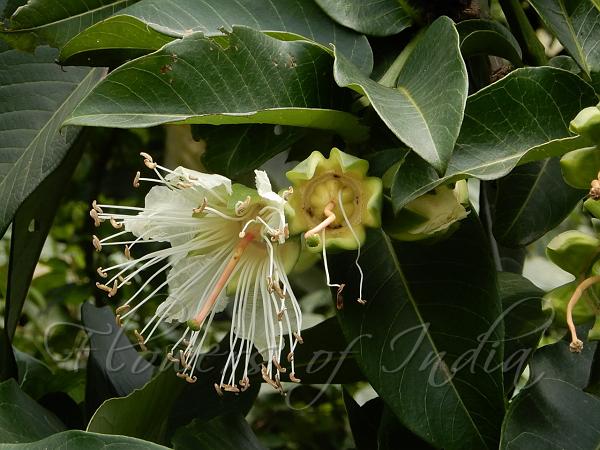|
| Duabanga |
|

|

| File size | 297096 |
| Original date | 5/29/19 10:13 AM |
| Resolution | 1280 x 960 |
| Flash | Flash did not fire, auto |
| Focal length | 13.7mm |
| Exposure time | 1/200s |
| Aperture | 4.5 |
| Focus Distance | |
| Metering Mode | Center weighted average |
| Camera make | NIKON |
| Camera model | COOLPIX A900 |
| Sensor type |
|
|
|
|
Photo: |
Botanical name: Duabanga grandiflora Family: Lythraceae (Crape Myrtle family)
Synonyms: Duabanga sonneratioides
Synonyms: Duabanga sonneratioides
Duabanga is a tall deciduous fast growing tree, whose
genus name
Duabanga was coined by Francis Hamilton from the vernacular name in
Tripura, Duyabangga. The trunk is erect, 40-80 feet high,
undivided but sometimes forking from the base. The lower limbs spread
drooping from the trunk; these are long, slender, sparingly branched, and
the branches are four-angled, loosely covered with large spreading leaves.
The leaves are oppositely arranged, red when young, horizontal in two
rows, one on each side of the branch, oblong in shape, shining above, dull
beneath, over 25 cm long and 10 cm broad. Flowers come out in panicles in
leaf axils and at the end of branches. Each flower is large, 5-6 cm
across, white in color and ill-smelling. The sepal structure is very thick,
bell-shaped and persistent. The 6 petals fall off soon. Stamens are many.
The fruit is a more or less rounded, leathery capsule, about the size of a
small orange. This tree of seen along the banks of streams in the Himalayas,
more commonly in the NE states to China, Peninsula Malaysia and Andaman
Islands.
| Identification credit: Dinesh Valke | Photographed in Arunachal Pradesh & Maharashtra. |
• Is this flower misidentified? If yes,